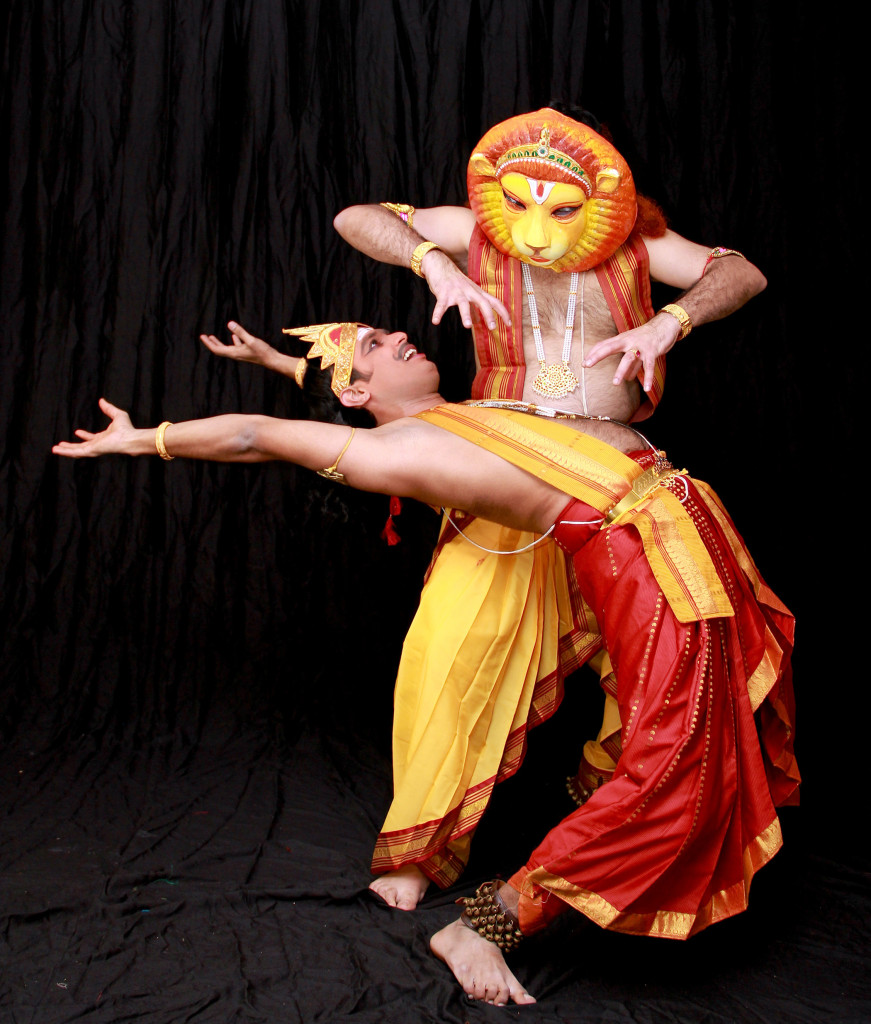Evolutionary Incarnations
Samskriti Dances the Stories of Vishnu
Dashavatar. It has a simple meaning. “Avatar” means “incarnation.” “Dasha” means “ten.” Hence, Dashavatar refers to the ten incarnations of the Hindu deity, Vishnu.
Samskriti, a Houston based Indian performing arts company, will be presenting Dashavatar on Sunday, April 6, at 5pm at the Cullen Theater, Wortham Center. Conceived and choreographed by Dr. Rathna Kumar, the show uses classical Indian dance as its medium to tell the stories of each incarnation.
Classical Indian dance is a storytelling medium, the most traditional of the dances being tales of Indian mythology. That may be the case for Dashavatar, but Dr. Kumar is quick to point out that modern use of the classical language is used in other stories. In fact, the vocabulary of classical Indian dance is a living language. “It changes all the time,” she says, ancient gestures finding new nuances and adaptations in the modern contexts.
The stories of Dashavatar may be ancient, but Dr. Kumar sees parallels with much discussed topics of the modern era, particularly how the incarnations presaged Charles Darwin’s theory of evolution. The first story takes place under the sea and Vishnu is incarnated as a fish. The next incarnation is that of a turtle. The third incarnation finds him in the form of a wild boar. With the fourth incarnation, the deity appears as a half-man-half-animal creature, and the fifth finds him manifesting as a primitive man, akin to a Neanderthal. It’s not until the sixth incarnation that Vishnu appears fully as a human and then, in each subsequent incarnation, as an ever more powerful man.
Vishnu is one of three great deities in Hindu religion. The other two are Brahman the Creator and Shiva the Destroyer, with Vishnu standing between the two as the Preserver. In each of Vishnu’s incarnations, his mission is to maintain a balance between the creation and destruction of the world. “It’s the lesson we learn, no matter what religion,” says Dr. Kumar, “that evil will be punished and good will always emerge the victor.”
Though traditionally told as one story, Dr. Kumar has broken the story into sections, each six to eight minutes in length, including a brief synopsis, in English, of the story about to be told. The program, too, will have printed synopses, to help a western audience follow the fast-paced stories. “We’re trying not to test anyone’s patience,” Dr. Kumar says, laughing. “We want to make it interesting, so everything moves quickly.”
Keeping an audience interested has long been a primary concern of Dr. Kumar as an Indian dancer and choreographer in Texas. She first came to Houston in 1975, when the Indian community was somewhere around 500 people (it is now well over 100,000). She hesitated, at first, to change her approach to dance, having been trained strictly in the classical style.
“I came here with a completely different outlook on dance,” she says. “I soon realized that I was in a different country, and to behave like I was in India was not going to help me in any way.” So to help her acclimate to the local arts scene, she attended as many performances at Miller Outdoor Theater as she could, to learn about western performance styles. She participated in some local theater. She attended early meetings of what eventually became the current Houston Arts Alliance. “I started thinking differently,” she says.
She began to pursue opportunities to educate Houstonians about Indian culture and dance and then she began to experiment with her own form. “My presentations have changed. In Indian classical dance, everything is perfectly symmetrical and predictable, so I started working with asymmetrical formations and shapes and using diagonal lines and not necessarily all straight lines, doing different things to see, okay, how does this work?” she says. “It’s the influence of what I saw around me.”
Still Dr. Kumar is, at her heart, a classical dancer and that remains her guiding light in what she does. “When I go back to India to perform, it becomes a strictly classical performance,” she says. “But when I am here, my thinking changes because I am influenced by all that is around me.”
She also still depends on her homeland and the people there. The music for Dashavatar was recorded in India by top musicians. Dr. Kumar draws inspiration from her sister, Seetha Ratnakar, also a dancer and a recently retired TV executive in India. “She had a tremendous influence in the way I think and do things,” Dr Kumar says of her sister, who not only gets credit as Artistic Consultant on the program, but also designed the costumes for the show.
So those curious about Indian classical dance need not worry that they are going to get some westernized form of Indian dance, whatever adaptations she may make in her adopted home. “I will not sacrifice the traditions of my dance. I keep it intact, but I try to make it as interesting and colorful as possible,” she says, noting that the national bird of India is the peacock.
Dr. Kumar, who laughs easily, states jovially, “I cannot imagine myself in gray!”




Recent Comments